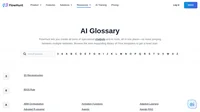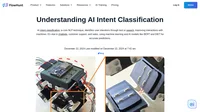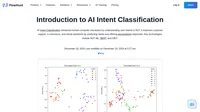Part-of-Speech Tagging (POS tagging) is a pivotal task in computational linguistics and natural language processing (NLP). It involves assigning each word in a text its corresponding part of speech, based on its definition and context within a sentence. The main objective is to categorize words into grammatical categories such as nouns, verbs, adjectives, adverbs, etc., enabling machines to process and understand human language more effectively. This task is also referred to as grammatical tagging or word-category disambiguation, and it forms the backbone of various advanced linguistic analyses.
Basic Word Types in English
Before delving deeper into POS tagging, it’s essential to understand some fundamental word categories in English:
- Noun (NN): Represents a person, place, thing, or idea. Examples include “cat,” “house,” and “love.”
- Verb (VB): Denotes an action or state of being, such as “run,” “eat,” and “is.”
- Adjective (JJ): Describes or modifies a noun, like “red,” “happy,” or “tall.”
- Adverb (RB): Modifies a verb, adjective, or other adverbs, often indicating manner, time, place, or degree. Examples are “quickly,” “very,” and “here.”
- Pronoun (PRP): Substitutes for a noun or noun phrase, such as “he,” “she,” or “they.”
- Preposition (IN): Shows the relationship between a noun (or pronoun) and other words, for instance, “in,” “on,” and “at.”
- Conjunction (CC): Connects words, phrases, or clauses, like “and,” “but,” or “or.”
- Interjection (UH): Expresses emotion or exclamation, such as “wow,” “ouch,” and “hey.”
Importance in Natural Language Processing (NLP)
POS tagging is crucial for enabling machines to interpret and interact with human language accurately. It serves as the foundation for various NLP applications, including:
- Machine Translation: Facilitates the translation of text by understanding the grammatical structures of sentences, thus enhancing the quality and accuracy of translations.
- Named Entity Recognition (NER): Helps identify proper nouns and names, such as people, organizations, and locations, improving information extraction processes.
- Information Retrieval and Extraction: Enhances the extraction of relevant data from large datasets by analyzing the grammatical structure of sentences.
- Text-to-Speech Conversion: Improves the conversion of written text into spoken language by understanding sentence syntax and semantics.
- Word Sense Disambiguation: Resolves ambiguities in words with multiple meanings by analyzing their context, which is essential for accurate language understanding.
Examples of Use
Consider the sentence: “The quick brown fox jumps over the lazy dog.” After applying POS tagging, each word is labeled as follows:
- “The” – Determiner (DT)
- “quick” – Adjective (JJ)
- “brown” – Adjective (JJ)
- “fox” – Noun (NN)
- “jumps” – Verb (VBZ)
- “over” – Preposition (IN)
- “the” – Determiner (DT)
- “lazy” – Adjective (JJ)
- “dog” – Noun (NN)
This labeling provides insights into the grammatical structure of the sentence, aiding in further NLP tasks by revealing the relationships between words.
POS Tagging Approaches
Several approaches exist for part-of-speech tagging, each with distinct advantages and challenges:
- Rule-Based Tagging:
- Utilizes a predefined set of grammatical rules to assign POS tags.
- Highly interpretable but often struggles with out-of-vocabulary words and requires comprehensive rule sets.
- Statistical Tagging:
- Employs probabilistic models like Hidden Markov Models (HMMs) to predict POS tags based on the likelihood of word sequences.
- Requires a large annotated corpus for training, yet effectively handles linguistic ambiguities.
- Transformation-Based Tagging:
- Applies a series of rules to modify initial POS tags based on contextual clues.
- Balances between rule-based and statistical methods, offering high accuracy with complex grammatical structures.
- Machine Learning-Based Tagging:
- Involves supervised learning techniques using annotated datasets to train models that predict POS tags.
- Includes advanced models like Recurrent Neural Networks (RNNs) and Conditional Random Fields (CRFs) for state-of-the-art accuracy.
- Hybrid Approaches:
- Combine elements of rule-based and statistical methods to achieve high accuracy while efficiently handling errors and out-of-vocabulary words.
Challenges in POS Tagging
- Ambiguity: Words may have multiple parts of speech depending on their context, making accurate tagging challenging.
- Idiomatic Expressions: Phrases that deviate from grammatical norms are difficult for tagging systems.
- Out-of-Vocabulary Words: Words not present in the training corpus pose challenges for statistical and machine learning models.
- Domain Dependence: Models trained on specific domains may not generalize well across different text types.
Use Cases in AI and Automation
POS tagging plays a vital role in developing AI systems that interact with human language, such as chatbots and virtual assistants. By understanding the grammatical structure of user inputs, AI systems can provide more accurate responses, enhancing user interaction. In AI automation, POS tagging aids tasks like document classification, sentiment analysis, and content moderation by offering syntactic and semantic insights into the text.
Research
Part-of-Speech (POS) Tagging is a fundamental process in Natural Language Processing (NLP) that involves labeling each word in a text with its corresponding part of speech, such as noun, verb, adjective, etc. This process aids in understanding the syntactic structure of sentences, which is crucial for various NLP applications like text analysis, sentiment analysis, and machine translation.
- Method for Customizable Automated Tagging: This paper by Maharshi R. Pandya and colleagues addresses the challenges of over-tagging and under-tagging in text documents. The authors propose a tagging method using IBM Watson’s NLU service to generate a universal set of tags applicable to large document corpora. They demonstrate the effectiveness of their method by applying it to 87,397 documents, achieving a high tagging accuracy. This research highlights the importance of developing efficient tagging systems to manage large-scale text data. Read more
- A Joint Named-Entity Recognizer for Heterogeneous Tag-sets Using a Tag Hierarchy: Genady Beryozkin and his team explore domain adaptation in named-entity recognition with multiple heterogeneously tagged training sets. They propose utilizing a tag hierarchy to learn a neural network that accommodates different tag-sets. Their experiments show improved performance in consolidating tag-sets, highlighting the benefits of a hierarchical tagging approach. Read more
- Who Ordered This?: Exploiting Implicit User Tag Order Preferences for Personalized Image Tagging: Amandianeze O. Nwana and Tsuhan Chen investigate the role of tag order preferences in image tagging. They propose a new objective function that considers users’ preferred tag orders to enhance automated image tagging systems. Their method shows improved performance on personalized tagging tasks, emphasizing the impact of user behavior on tagging systems. Read more
Natural Language Processing (NLP)
Explore how Natural Language Processing (NLP) bridges human-computer interaction. Discover its key aspects, workings, and applications today!
Understanding AI Intent Classification
Unlock the potential of AI intent classification with FlowHunt. Enhance chatbot efficiency, customer support, and user experience today!
Introduction to AI Intent Classification
Discover how AI Intent Classification enhances interactions, boosts user satisfaction, and streamlines business operations across various sectors.



